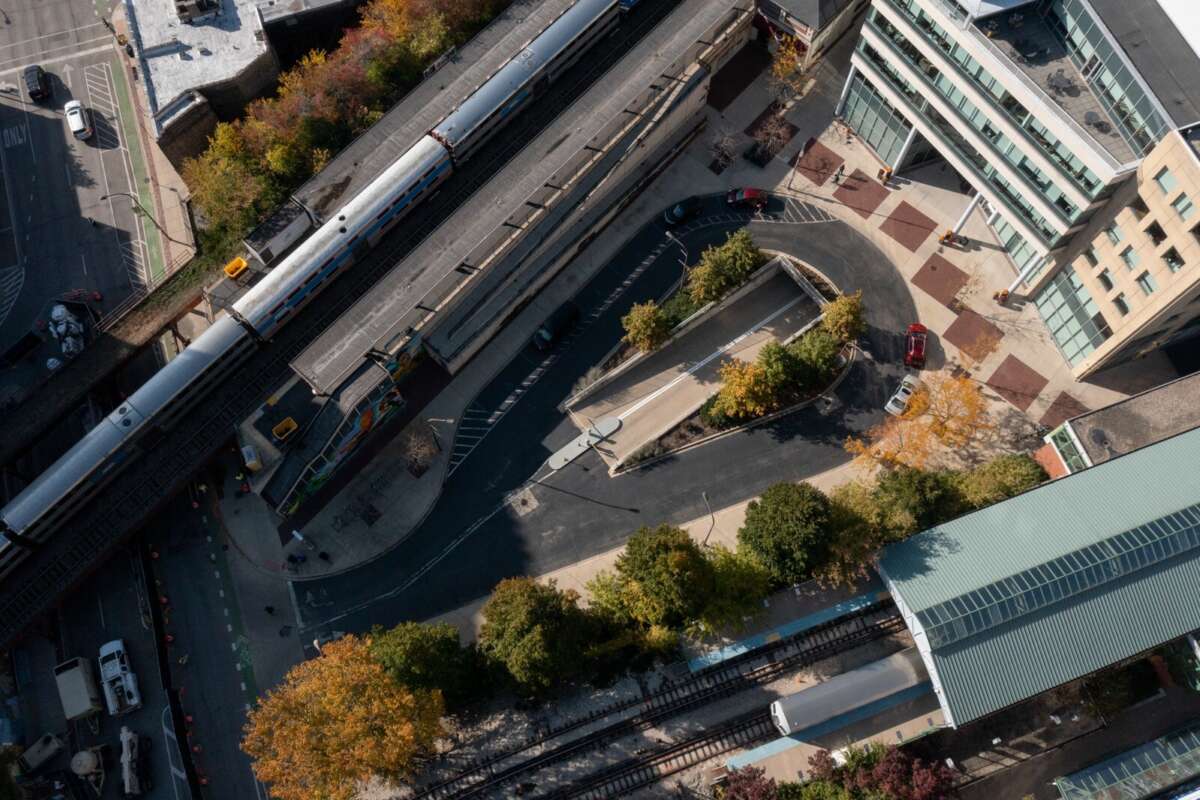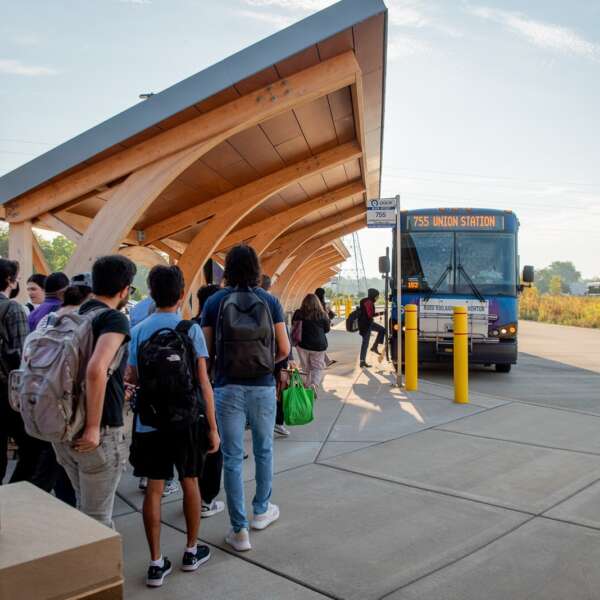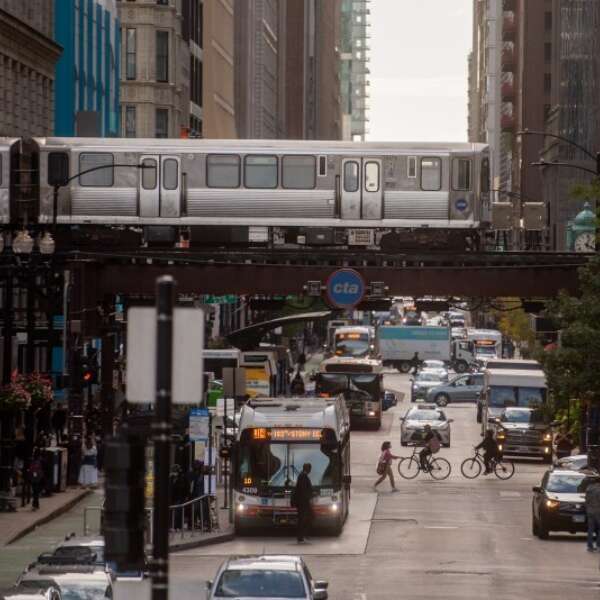What Illinois can learn from transit funding packages in peer states
August 24, 2023
August 24, 2023

Public transit plays an essential role in the lives of millions of riders across the Chicago region and has the potential to reach even more people — but the system has been drastically underfunded for decades. This lack of funding has been exacerbated in recent years because of pandemic-induced drops in ridership and fare revenue.
While significant ridership recovery has occurred, permanent changes in remote and hybrid work are projected to result in lower levels of ridership for the remainder of the decade compared to 2019. Beginning in 2026, the RTA system is facing a projected $730 million annual budget gap. At nearly 20% of the annual operating budget, this gap, if unaddressed, would drastically impact current service and fares, and prohibit any additional improvements to the regional system.
The RTA system is not alone in facing many of its current challenges. Large transit systems across the US are facing proportionally similar funding gaps as they draw down remaining federal COVID relief funds, many facing shorter timelines than our region. Every major transit agency across the country has been able to continue operations because of this relief funding, and all are working to find solutions to fill their budget gaps before they hit their own fiscal cliffs when that funding is depleted. Three states have already taken action to provide new revenues for transit. Action taken at the state level to support peer agencies will provide valuable insights into how the RTA can continue to advocate for additional public funding as the fiscal cliff approaches.
Big city agencies like Chicago’s are facing these significant operating deficits because their budgets are heavily reliant on fares. While small and midsize agencies already secure 80% or more of their operating funding from federal, state, and local governments, regions like Chicago have traditionally been expected to raise as much as 50% of our operating revenue from fares.
Transit is the Answer calls for the RTA to work with regional partners and stakeholders to secure increased funding for transit operations and develop a funding structure that is less reliant on fares. This would allow us to not only avoid severe fare hikes and service cuts, but ultimately improve service, grow ridership, and create a more equitable system.
Three states have taken action to support their transit systems through recent budget packages. Highlights of each package provide an early look at what others are doing to help inform how the RTA should pursue solutions for our region.
Spurred by advocacy from the California Transit Association, California’s legislature passed a package that provides $5.1 billion to the states’ 300+ transit agencies over the next 4 years. This is forecasted to cover operations for 1-2 years before more funding will need to be sought.
More details:
Governor Hochul championed new funding for transit in her budget proposals early on, and the final budget includes nearly $4.5 billion in one-time and ongoing revenues to the Metropolitan Transit Authority projected to fill their budget gap until at least 2027.
More details:
Minnesota had not passed a state capital bill since 2008, so there was significant momentum behind taking bold action in support of transportation this session. The final package pairs an $8.8 billion state capital bill with dedicated, ongoing revenue for Metro Transit operations.
More details:
While this is only a small subset of the agencies that will ultimately have to take action to address their fiscal cliffs, a few basic takeaways can be gathered from their examples:
The RTA will continue to monitor legislation affecting peer systems as it advances to help inform our own strategies moving forward, but we know that we cannot do this alone. Join our coalition to take future action and advocate with us for solutions.
Subscribe to our Newsletter
Related Articles
 For the third year in a row, regional transit ridership was up by double-digits in 2024
For the third year in a row, regional transit ridership was up by double-digits in 2024
Ridership across the Chicago region’s transit system continued to increase throughout 2024, according to the latest data from CTA, Metra, and Pace. The regio...
January 28, 2025 RTA is seeking $1.5 billion in annual operating funding. What would that mean for your commute?
RTA is seeking $1.5 billion in annual operating funding. What would that mean for your commute?
On January 15, RTA released Transforming Transit, a vision for the regional transit system with $1.5 billion in annual operating funding supported by a stron...
January 28, 2025 RTA proposes reforms to increase efficiency, transparency, and accountability across transit system
RTA proposes reforms to increase efficiency, transparency, and accountability across transit system
RTA is proposing a historic restructuring of the region’s transit governance to maximize the impact of new operating funding and ensure all riders experience...
January 24, 2025 What Chicago can learn from Philadelphia as the transit fiscal cliff approaches
What Chicago can learn from Philadelphia as the transit fiscal cliff approaches
Beginning in 2026, Chicago’s regional transit system faces a projected $770 million annual budget gap. At nearly 20% of the annual operating budget, this gap...
January 23, 2025 2024 recap: RTA brings 8 Transit Station Activations throughout region as part of pilot program
2024 recap: RTA brings 8 Transit Station Activations throughout region as part of pilot program
In spring 2024, RTA announced more than $120,000 in funding for eight Transit Station Activation projects as part of a pilot program with the goal of improvi...
January 9, 2025 Village of La Grange adopts comprehensive plan calling for more density near transit
Village of La Grange adopts comprehensive plan calling for more density near transit
In November, the Village of La Grange voted to adopt La Grange Forward, a comprehensive plan developed as part of the RTA’s Community Planning program. The d...
January 7, 2025